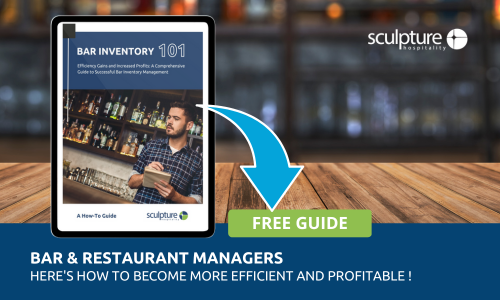For bar owners, understanding your liquor cost isn’t just helpful—it’s essential. Whether you're running a dive bar, a craft cocktail lounge, or anything in between, knowing how much you're spending on alcohol compared to how much you're bringing in is a key component of profitability.
In this blog, we’ll break down what "liquor cost" really means, explain the industry benchmarks, and explore the many factors that influence the so-called "average liquor cost for a bar." We'll also show how good inventory management is directly tied to keeping those costs in line.
What is Liquor Cost?
Liquor cost, often referred to as pour cost, is the percentage of your bar’s revenue that goes toward purchasing alcohol. It can include just the spirits or also mixers and garnishes, depending on how you track expenses. The basic formula is:
Liquor Cost (%) = (Cost of Alcohol Used / Alcohol Sales) x 100
If your bar spends $2,000 on alcohol in a week and generates $8,000 in alcohol sales, your liquor cost would be 25%.
Why It Matters
Knowing your liquor cost allows you to:
- Price drinks for profitability
- Spot over-pouring or theft
- Control COGS (Cost of Goods Sold)
- Make informed purchasing decisions
A few percentage points too high, and you could be losing thousands over the course of a year.
What is the Average Liquor Cost for a Bar?
While there's no one-size-fits-all number, most industry experts place the average liquor cost for a bar between 18% and 24%.
This range can vary significantly depending on:
- Type of Bar: Upscale bars may have higher costs due to premium ingredients, while dive bars often have lower pour costs but also lower margins.
- Sales Mix: A bar that sells mostly draft beer will have a very different average than one specializing in cocktails.
- Location: Urban areas with higher supplier costs or pricing competition may see slightly higher averages.
Industry Benchmarks
According to Restaurants Canada, average beverage cost percentages break down as:
- Spirits: 18% to 20%
- Beer: 24% to 28%
- Wine: 30% to 40%
Cocktails tend to have higher ingredient costs but also much higher margins, depending on your pricing strategy.
Factors That Skew Averages
- Over-Pouring or Spillage Without measured pours or jiggers, bartenders can easily over-pour, driving up your liquor cost.
- Theft Even small amounts of untracked product loss due to theft can dramatically impact your margins over time.
- Discounting Regular happy hours or staff comps without proper tracking can inflate your liquor cost.
- Supplier Relationships Negotiated pricing or bulk discounts can lower your cost per ounce, affecting your overall percentage.
How to Calculate Your Own Liquor Cost
Start by choosing a time period (e.g., one week):
- Perform a starting inventory count.
- Add all liquor purchases during the period.
- Perform an ending inventory count.
- Use the formula:
Liquor Cost = (Starting Inventory + Purchases - Ending Inventory) / Alcohol Sales x 100
Make sure your inventory is accurate and categorized by product for clearer insights.
The Link Between Liquor Cost and Inventory Management
Tracking inventory is not just about knowing what you have on the shelves. It's about identifying trends, reducing waste, and protecting profit.
- Frequent Counts: Weekly or biweekly counts help spot variances early.
- Portion Control Tools: Use jiggers, pour spouts, or automated dispensers.
- Variance Reporting: Compare expected usage with actual depletion.
Bars that track inventory consistently see 10-15% improvements in profit margins because they can respond quickly to issues.
Real-World Example
Let’s say your bar pours 2 oz. of vodka per cocktail and you sell 500 vodka cocktails a month. That’s 1,000 oz. total. If your inventory count shows 1,200 oz. depleted, you've got a problem: either over-pouring, spillage, or theft. And it’s costing you.
Actionable Tips to Stay on Target
- Set a Target Liquor Cost: Aim for 18–22% depending on your concept.
- Use Recipes: Standardized recipes ensure consistent cost per drink.
- Train Staff: Emphasize the importance of pour control and honest reporting.
- Audit Regularly: Monthly audits catch issues early.
Conclusion: Don’t Obsess Over the "Average"
While knowing the average liquor cost for a bar gives you a benchmark, your goal should be measuring, managing, and improving your own. Every bar is different, and your ideal liquor cost depends on your menu, pricing strategy, and how well you control inventory.
Use your liquor cost percentage as a compass—not a scorecard. Track it often, manage your inventory closely, and refine your systems over time.
Ready to master your bar’s inventory and protect your margins? Check out our Bar Inventory 101 guide to get started

.png)




.png)




